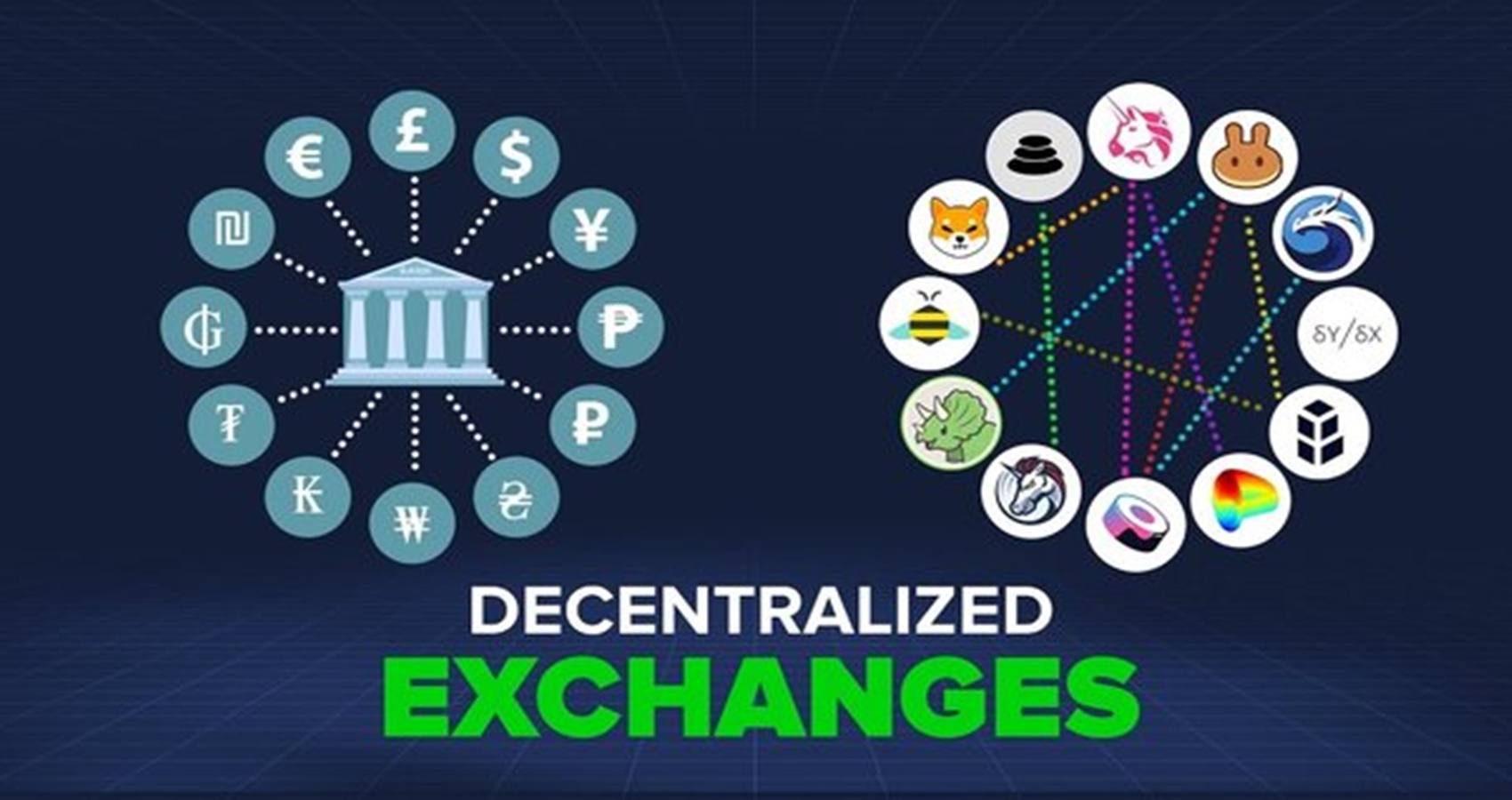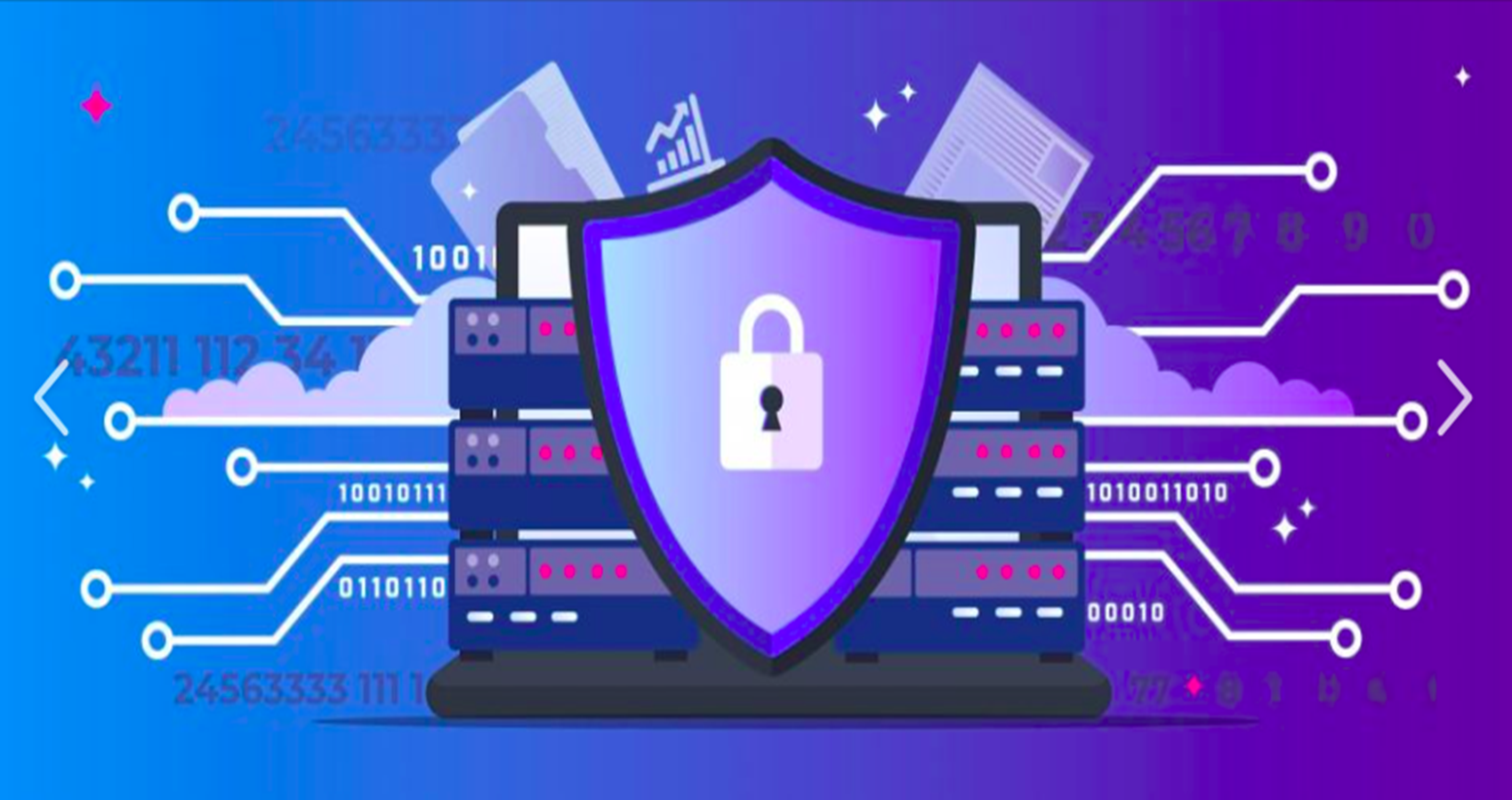As an investor or enthusiast navigating the cryptocurrency market, understanding the key differences between Bitcoin and altcoins is crucial in making informed decisions and maximizing the potential of your digital asset portfolio. The Rise of Altcoins: Expanding the Cryptocurrency Ecosystem The advent of Bitcoin in 2009 marked a pivotal moment in the history of digital finance, paving the way for a new era of decentralized, peer-to-peer transactions. However, as the cryptocurrency industry matured, innovators and developers recognized the need for alternative cryptocurrencies that could address specific challenges or offer unique capabilities beyond what Bitcoin provides. These alternative cryptocurrencies, or altcoins, have since proliferated, each with its own distinct features, consensus mechanisms, and use cases. From Ethereum’s smart contract functionality to Litecoin’s faster transaction times, the altcoin ecosystem has become a vibrant and diverse landscape, catering to the diverse needs and preferences of the cryptocurrency community. Key Differences Between Bitcoin and Altcoins As you navigate the world of cryptocurrency, it’s essential to understand the fundamental differences between Bitcoin and altcoins. These distinctions can have a significant impact on the performance, use cases, and overall adoption of these digital assets. Understanding the Bitcoin Ecosystem Bitcoin, the pioneering cryptocurrency, has established itself as the benchmark and dominant player in the digital asset landscape. To better understand the Bitcoin ecosystem, let’s examine some of its key characteristics: Understanding the Altcoin Ecosystem The altcoin ecosystem is a diverse and dynamic landscape, with a wide range of cryptocurrencies offering unique features and use cases. Here’s a closer look at some key aspects of the altcoin ecosystem: Bitcoin vs. Altcoins: Comparative Analysis Strategies for Investing in Bitcoin and Altcoins As an investor or cryptocurrency enthusiast, it’s important to understand the key differences between Bitcoin and altcoins to make informed decisions and optimize your investment strategy. Here are some strategies to consider: By understanding the key differences between Bitcoin and altcoins, and adopting a well-informed investment strategy, you can navigate the dynamic cryptocurrency landscape and potentially capitalize on the growth and innovation within this rapidly evolving industry. Conclusion: Embracing the Diversity of the Cryptocurrency Ecosystem The cryptocurrency ecosystem has evolved far beyond the initial dominance of Bitcoin, with the rise of a diverse array of altcoins offering a wide range of features, use cases, and investment opportunities. While Bitcoin remains the benchmark and most well-known cryptocurrency, the emergence of altcoins has introduced a new level of dynamism and innovation to the digital asset landscape. As an investor or enthusiast, it is essential to understand the fundamental differences between Bitcoin and altcoins, including their origins, technological underpinnings, monetary policies, use cases, and regulatory considerations. This knowledge can help you make more informed decisions, diversify your portfolio, and potentially capitalize on the growth and opportunities presented by the broader cryptocurrency market. Ultimately, the Bitcoin vs. altcoin debate is not about choosing a single “winner,” but rather recognizing the value and potential of the entire cryptocurrency ecosystem. By embracing this diversity, you can position yourself to navigate the dynamic and rapidly evolving world of digital assets, unlocking the transformative power of this technological revolution.
What are the Benefits of Decentralized Exchanges?
The Rise of Decentralized Exchanges Decentralized exchanges have emerged as a response to the shortcomings of traditional centralized exchanges. These centralized platforms have been plagued by issues such as security breaches, lack of transparency, and censorship concerns. Decentralized exchanges, on the other hand, offer a more secure and transparent alternative, empowering users with greater control over their digital assets. The Benefits of Decentralized Exchanges Advantages of Decentralized Exchanges for Traders Decentralized exchanges offer several advantages that make them attractive to traders in the cryptocurrency market: Key Benefits of DEXs for Cryptocurrency Investors Decentralized exchanges offer several key benefits for cryptocurrency investors, making them an attractive option compared to traditional centralized exchanges: Decentralized Exchanges vs. Centralized Exchanges: Benefits When comparing decentralized exchanges (DEXs) and centralized exchanges (CEXs), there are several key benefits that set DEXs apart: DEX Security Benefits Decentralized exchanges (DEXs) offer several security benefits that set them apart from their centralized counterparts: These security benefits of DEXs help to address the concerns and vulnerabilities that have plagued centralized exchanges, providing users with a more secure and trustworthy platform for trading digital assets. Why Decentralized Exchanges Matter Decentralized exchanges (DEXs) have emerged as a significant force in the cryptocurrency and blockchain ecosystem, and their importance cannot be overstated. Here are some key reasons why decentralized exchanges matter: By addressing the shortcomings of centralized exchanges and offering a more secure, transparent, and user-centric trading experience, decentral Advantages of Peer-to-Peer Trading One of the key benefits of decentralized exchanges is the ability to facilitate peer-to-peer trading, where users can directly exchange digital assets with one another without the need for a centralized intermediary. This peer-to-peer model offers several advantages: By embracing the advantages of peer-to-peer trading, decentralized exchanges are transforming the way users interact with and trade digital assets, offering a more secure, transparent, and user-centric alternative to traditional centralized exchanges. Conclusion: The Future of Decentralized Exchanges Decentralized exchanges (DEXs) have emerged as a transformative force in the cryptocurrency and blockchain ecosystem, offering a plethora of benefits that address the shortcomings of traditional centralized exchanges. From enhanced security and custody, to increased transparency and accessibility, DEXs are empowering users and promoting financial inclusion on a global scale. As the adoption of DEXs continues to grow, their importance in the wider cryptocurrency and blockchain landscape will only continue to increase. The ability to trade digital assets in a decentralized, censorship-resistant, and peer-to-peer manner is a game-changer, fostering innovation, experimentation, and a more equitable financial system. Looking ahead, the future of DEXs holds immense potential. With ongoing developments in areas such as scalability, user experience, and regulatory compliance, DEXs are poised to become even more accessible, efficient, and appealing to a wider audience of cryptocurrency users and investors. The benefits of decentralized exchanges, as outlined in this blog post, demonstrate the transformative power of this technology. By prioritizing user control, security, transparency, and accessibility, DEXs are not only reshaping the trading landscape but also contributing to the broader vision of a decentralized, equitable, and inclusive financial system. As the cryptocurrency and blockchain ecosystem continues to evolve, the role of decentralized exchanges will undoubtedly become more crucial, solidifying their position as a key driver of innovation and a beacon of financial empowerment in the digital age.
How do I Start a Career in Cryptocurrency?
Understanding the Cryptocurrency Industry Before embarking on your cryptocurrency career journey, it’s essential to have a solid understanding of the industry’s landscape, key players, and emerging trends. Cryptocurrency, the umbrella term for digital currencies and assets built on blockchain technology, has experienced rapid growth and adoption in recent years, revolutionizing the way we think about finance, banking, and investment. The cryptocurrency industry encompasses a wide range of sectors, including: Understanding the breadth and depth of the cryptocurrency industry will help you identify the specific roles and sectors that align with your skills, interests, and career aspirations. Assessing Your Skills and Interests Successful careers in the cryptocurrency industry often require a unique blend of technical, analytical, and entrepreneurial skills. As you consider your entry into the crypto space, take the time to assess your existing competencies and identify areas where you may need to develop new skills. Some key skills that are highly valued in the cryptocurrency industry include: Take the time to reflect on your existing skills and interests, and consider how they might translate into a rewarding career in the cryptocurrency industry. Pathways to a Cryptocurrency Career There are several potential pathways to start a career in the cryptocurrency industry, depending on your background, experience, and career goals. Here are some key steps to consider: Remember, the cryptocurrency industry is still relatively young and evolving rapidly, which means there are ample opportunities for individuals with diverse backgrounds and skill sets to find rewarding careers. By approaching your entry into the crypto space with a strategic and proactive mindset, you can position yourself for success. Cryptocurrency Career Opportunities The cryptocurrency industry offers a wide range of career opportunities, catering to a diverse array of skill sets and interests. Here are some of the most prominent and in-demand roles within the crypto sector: As the cryptocurrency industry continues to evolve, new and diverse career opportunities are constantly emerging, catering to a wide range of skills and interests. Essential Skills for a Cryptocurrency Career To thrive in the rapidly changing cryptocurrency industry, individuals should possess a unique blend of technical, analytical, and entrepreneurial skills. Here are some of the essential skills that are highly valued in the crypto sector: By developing a combination of these essential skills, individuals can position themselves for a successful and rewarding career in the dynamic and rapidly evolving cryptocurrency industry. Transitioning into a Cryptocurrency Career For those considering a career transition into the cryptocurrency industry, the process may involve several strategic steps: By following these steps and proactively navigating the transition into the cryptocurrency industry, individuals can successfully leverage their existing skills and experience to embark on a rewarding career in this dynamic and rapidly evolving field. Conclusion: Embracing the Cryptocurrency Career Path The cryptocurrency industry presents an exciting and dynamic career path for individuals seeking to be at the forefront of financial innovation. As the adoption and integration of digital assets continue to grow, the demand for skilled professionals across a wide range of roles and sectors within the crypto ecosystem will only continue to rise. By understanding the industry landscape, assessing your skills and interests, and strategically pursuing educational and practical opportunities, you can position yourself for a successful and fulfilling career in the cryptocurrency industry. Whether you’re drawn to the technical aspects of blockchain development, the analytical rigor of cryptocurrency trading, or the entrepreneurial spirit of building decentralized applications, the crypto space offers a diverse array of career paths to explore. As you embark on your cryptocurrency career journey, remember to stay adaptable, continuously learn, and embrace the dynamic nature of this rapidly evolving industry. By doing so, you can not only contribute to the growth and evolution of the cryptocurrency landscape but also unlock a world of exciting and rewarding career opportunities. The future of finance is digital, and the cryptocurrency industry stands at the forefront of this transformation. By taking the plunge and pursuing a career in this space, you have the chance to be a part of a revolution that is reshaping the way we think about money, finance, and the very fabric of our digital world.
Navigating the Global Fintech Regulatory Landscape
The financial technology (fintech) industry has been rapidly transforming the way we bank, invest, and manage our finances. As innovative fintech solutions continue to disrupt traditional financial services, regulators worldwide are grappling with how to strike the right balance between fostering innovation and ensuring consumer protection, financial stability, and fair competition. This article provides a comprehensive overview of the fintech regulatory landscape globally, covering key regulations, emerging trends, and compliance considerations for fintech companies operating across borders. Understanding these fintech regulations is crucial for businesses seeking to navigate the complex and ever-evolving regulatory environment. Fintech Regulations Overview: A Global Perspective The fintech regulatory landscape is a mosaic of laws, guidelines, and frameworks implemented by various jurisdictions to govern the fintech industry. While some regulations are tailored specifically to fintech, others are broad financial regulations that apply to both traditional and innovative financial services providers. Regulators across the globe are actively working to develop and update their fintech regulatory frameworks to keep pace with the rapid evolution of fintech solutions. The overarching goals of these regulations are to: While these objectives are widely shared, the specific approaches and focus areas of fintech regulations vary across different regions and jurisdictions, reflecting local market conditions, policy priorities, and regulatory philosophies. Regional Fintech Regulatory Landscapes United States In the United States, fintech regulation is a patchwork of federal and state laws, with multiple agencies overseeing different aspects of the industry. Some key US fintech regulations include: Notable fintech regulatory developments in the US include the Office of the Comptroller of the Currency’s (OCC) special purpose national bank charter for fintech companies and the SEC’s guidance on digital asset securities. European Union The European Union (EU) has been at the forefront of developing a comprehensive fintech regulatory framework to promote innovation while ensuring consumer protection and financial stability. Key EU fintech regulations include: The European Banking Authority (EBA) and the European Securities and Markets Authority (ESMA) play key roles in developing fintech regulatory policies and monitoring fintech developments in the EU. United Kingdom After leaving the European Union, the United Kingdom (UK) has been working to establish its own fintech regulatory framework. The Financial Conduct Authority (FCA) is the primary regulator overseeing fintech in the UK, with initiatives such as: The UK government has also introduced initiatives like the Kalifa Review to support the fintech industry and develop a comprehensive regulatory approach. Asia-Pacific The Asia-Pacific region has seen a surge in fintech adoption and innovation, with regulators taking varied approaches to fintech regulation. Some notable examples include: Many Asia-Pacific countries have adopted regulatory sandboxes and innovation hubs to facilitate fintech development while monitoring potential risks. Other Regions Fintech regulation is also evolving in other parts of the world, such as: As fintech continues to grow globally, more countries are expected to introduce or update their fintech regulatory frameworks to keep up with industry developments. Fintech Regulatory Trends and Emerging Challenges While fintech regulation varies across jurisdictions, several common trends and challenges are shaping the global regulatory landscape: As the fintech industry continues to evolve, regulators will need to adapt and address emerging challenges while balancing innovation, consumer protection, and financial stability objectives. Fintech Compliance: Navigating the Regulatory Landscape For fintech companies operating globally, navigating the complex and ever-changing regulatory landscape can be a significant challenge. Here are some key considerations and best practices for fintech compliance: By proactively addressing regulatory compliance considerations, fintech companies can navigate the global regulatory landscape more effectively, mitigate risks, and position themselves for long-term success in the rapidly evolving fintech industry. Conclusion The fintech industry’s rapid growth and disruptive potential have prompted regulators worldwide to develop and update their regulatory frameworks to strike the right balance between fostering innovation and ensuring consumer protection, financial stability, and fair competition. While the specific approaches and focus areas of fintech regulations vary across different regions and jurisdictions, some common trends and challenges are shaping the global regulatory landscape. These include open banking and data sharing, crypto-asset regulation, cybersecurity and operational resilience, AML/CFT compliance, regulatory sandboxes, cross-border coordination, big tech regulation, and ESG considerations. For fintech companies operating globally, navigating this complex and ever-changing regulatory landscape requires a proactive approach to compliance. Key considerations include understanding local regulations, developing robust compliance programs, leveraging regtech solutions, fostering a culture of compliance, engaging with regulatory sandboxes and innovation hubs, collaborating with industry stakeholders, and seeking professional advice. By staying informed, proactive, and adaptable, fintech companies can navigate the global regulatory landscape more effectively, mitigate risks, and position themselves for long-term success in the rapidly evolving fintech industry.
Blockchain Trends to Watch: What’s Next for Developers in 2024
The blockchain technology landscape is constantly evolving, driven by the relentless pace of innovation and the growing demand for decentralized solutions across various industries. As we approach 2024, developers and technologists are eagerly anticipating the emerging blockchain trends that will shape the future of this transformative technology. In this article, we’ll explore the most significant blockchain trends that developers should keep an eye on in 2024, highlighting the potential impact of these trends on blockchain development and the broader technology ecosystem. From advancements in scalability and interoperability to the rise of decentralized identities and the convergence of blockchain with other cutting-edge technologies, 2024 promises to be an exciting year for blockchain enthusiasts and professionals. Scalability and Performance Enhancements One of the most pressing challenges facing blockchain technology has been its limited scalability and throughput, which has hindered its adoption for high-volume, real-time applications. However, developers can expect significant advancements in blockchain scalability solutions in 2024, driven by ongoing research and innovation. By addressing scalability challenges, these advancements will enable blockchain developers to build more robust and high-performance applications, unlocking new use cases and driving broader adoption of blockchain technology. Interoperability and Cross-Chain Integration As the blockchain ecosystem continues to expand, the need for interoperability and seamless communication between different blockchain networks has become increasingly apparent. In 2024, developers can expect to see significant progress in blockchain interoperability solutions, enabling cross-chain transactions, asset transfers, and data sharing. By enabling interoperability and cross-chain integration, these advancements will unlock new possibilities for blockchain developers, allowing them to create interconnected and interoperable decentralized applications that span multiple blockchain networks. Decentralized Identities and Privacy Solutions As blockchain technology continues to gain traction in various industries, the need for secure and privacy-preserving digital identities has become increasingly important. In 2024, developers can expect to see significant advancements in decentralized identity solutions built on blockchain technology. By addressing the growing demand for privacy and secure digital identities, these advancements will enable blockchain developers to build applications that respect user privacy while maintaining the transparency and auditability offered by blockchain technology. Convergence with Artificial Intelligence (AI) and Internet of Things (IoT) The convergence of blockchain technology with other emerging technologies, such as artificial intelligence (AI) and the Internet of Things (IoT), is expected to unlock new possibilities and use cases in 2024. Developers can anticipate innovative applications that combine the strengths of these technologies to create powerful and transformative solutions. By combining the strengths of blockchain with AI and IoT technologies, developers can create innovative solutions that leverage the power of decentralization, transparency, and immutability, while also benefiting from the capabilities of intelligent systems and interconnected devices. Sustainability and Environmental Impact As concerns about the environmental impact of blockchain technology continue to grow, developers can expect to see a heightened focus on sustainability and energy efficiency in 2024. Initiatives and innovations aimed at reducing the carbon footprint of blockchain networks and promoting sustainable practices will become increasingly prevalent. By addressing sustainability concerns and promoting environmentally-friendly practices, blockchain developers and projects can contribute to the long-term viability and adoption of this transformative technology while minimizing its ecological impact. Developer Tools and Frameworks As the blockchain ecosystem continues to evolve, developers can expect to see significant improvements and innovations in the tools and frameworks available for building decentralized applications. These advancements will streamline the development process, improve efficiency, and enable the creation of more sophisticated and robust blockchain applications. By improving the tools and frameworks available to developers, the blockchain ecosystem will become more accessible, efficient, and productive, enabling the creation of innovative and high-quality decentralized applications across various industries. Conclusion As we approach 2024, the blockchain technology landscape is poised for significant advancements and transformations. From scalability and interoperability solutions to decentralized identities and the convergence with AI and IoT, developers can expect a wealth of exciting opportunities and challenges. By staying informed about these emerging trends and embracing innovative approaches, blockchain developers can position themselves at the forefront of this rapidly evolving field. Whether it’s building high-performance and interoperable decentralized applications, implementing privacy-preserving solutions, or leveraging the power of AI and IoT, the possibilities are vast and diverse. Additionally, as concerns about sustainability and environmental impact continue to grow, developers will play a crucial role in driving the adoption of energy-efficient practices and promoting environmentally-friendly blockchain solutions. With the continuous improvement of developer tools and frameworks, the barrier to entry for blockchain development will be lowered, enabling a broader range of developers and innovators to contribute to the growth and evolution of this transformative technology. As the blockchain ecosystem continues to mature and expand, developers will be at the forefront of shaping its future, unlocking new possibilities, and driving innovation across various industries. The trends outlined in this article provide a glimpse into the exciting developments that lie ahead, setting the stage for a future where blockchain technology plays an increasingly prominent role in our digital lives.
Learn Blockchain Security: A Comprehensive Guide to Safeguarding Decentralized Networks
As blockchain technology continues to gain traction across various industries, the importance of blockchain security cannot be overstated. With the rise of decentralized applications (dApps), cryptocurrencies, and smart contracts, ensuring the security and integrity of blockchain networks has become a critical concern. Blockchain security is not just about protecting digital assets; it also encompasses safeguarding sensitive data, preventing malicious attacks, and maintaining the trust and transparency that blockchain technology promises. In this comprehensive guide, we’ll delve into the essential aspects of blockchain security, covering fundamental concepts, best practices, and advanced techniques. Whether you’re a developer, security professional, or simply someone with a keen interest in blockchain technology, this resource will provide you with the knowledge and skills necessary to navigate the complex landscape of blockchain security. Blockchain Security Basics: Before diving into advanced topics, it’s crucial to understand the fundamental principles of blockchain security. At its core, blockchain security relies on several key concepts, including: Understanding these fundamental concepts is essential for developing a solid foundation in blockchain security and appreciating the unique security challenges and considerations associated with decentralized networks. Blockchain Security Protocols and Techniques: To ensure the security and integrity of blockchain networks, various protocols and techniques have been developed. Here are some of the most important ones: Mastering these protocols and techniques is essential for developing secure and robust blockchain applications and networks. Blockchain Security Best Practices: In addition to understanding the protocols and techniques, adhering to blockchain security best practices is crucial for mitigating risks and ensuring the overall security of your blockchain solutions. Here are some key best practices to follow: By following these best practices, you can significantly reduce the risk of security breaches and vulnerabilities, fostering trust and confidence in your blockchain solutions. Advanced Blockchain Security Concepts: As you dive deeper into the world of blockchain security, you’ll encounter more advanced concepts and techniques. Here are some areas to explore: Exploring these advanced concepts will not only deepen your understanding of blockchain security but also prepare you for the cutting-edge challenges and opportunities that lie ahead. Blockchain Security Training and Certification: To develop your blockchain security skills further and demonstrate your expertise, consider pursuing blockchain security training and certification programs. These programs are offered by various educational institutions, industry organizations, and technology companies. Here are some recommended options: By pursuing blockchain security training and certification, you’ll not only gain valuable knowledge and skills but also demonstrate your commitment to this rapidly evolving field and increase your career prospects as a blockchain security professional. Conclusion: As blockchain technology continues to disrupt and transform various industries, the importance of blockchain security cannot be overstated. Securing decentralized networks, smart contracts, and digital assets is crucial for maintaining the trust, transparency, and integrity that blockchain promises. In this comprehensive guide, we’ve explored the fundamentals of blockchain security, including key concepts, protocols, and best practices. We’ve also delved into advanced topics, such as cryptographic primitives, formal verification, and privacy-preserving computation, providing you with a roadmap for deepening your knowledge and skills. Whether you’re a developer, security professional, or simply someone with a keen interest in blockchain technology, investing time and effort into learning blockchain security is essential for staying ahead of the curve and contributing to the ongoing development and adoption of this transformative technology. By embracing blockchain security training and certification programs, you can not only validate your expertise but also open doors to exciting career opportunities in this rapidly growing field. Continuous learning, staying up-to-date with the latest advancements, and actively participating in the blockchain security community will be key to navigating the ever-evolving landscape of decentralized networks and applications. Embrace the challenge of securing the future of decentralized technology and become a trusted expert in the realm of blockchain security.








